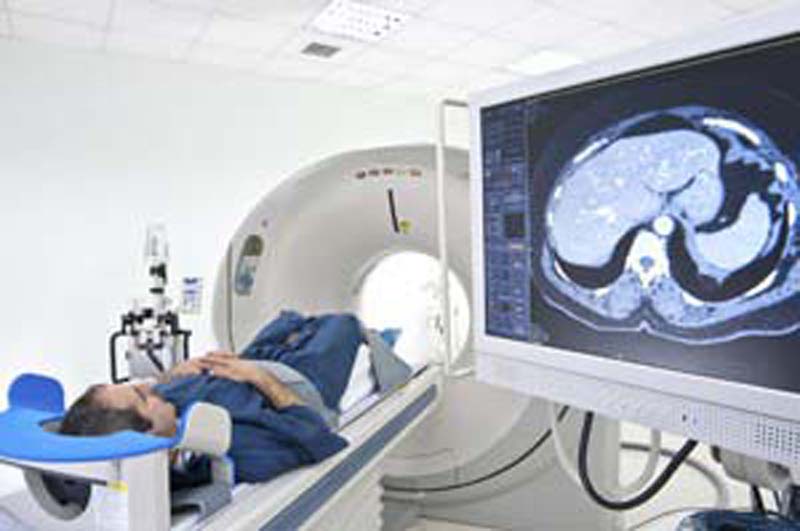
Brain tumors, and by extension, central nervous system (CNS) tumors, are diagnosed in about six people per 100,000 each year, which represents 1.4 percent of all cancer cases. [i] Although a fairly rare cancer, it's important to understand the signs, types and treatment plans for these types of cancers.
Causes and Risk Factors Connected to Brain Cancer [ix][x]

The causes of most brain and CNS cancers are not known, however, factors that may increase the risk of developing certain types of brain tumors include exposure to radiation, exposure to vinyl chloride, infection with the Epstein-Barr virus or AIDS (acquired immunodeficiency syndrome) and receiving an organ transplant . Certain genetic factors or syndromes may also increase the risk of brain tumors, such as Neurofibromatosis type 1 (NF1) or 2 (NF2), von Hippel-Lindau disease , Tuberous sclerosis , Li-Fraumeni syndrome , Turcot syndrome type 1 or 2 and Nevoid basal cell carcinoma syndrome .
Signs and Symptoms of Brain/CNS Tumors
The signs and symptoms depend on where the tumor forms in the brain, what the affected part of the brain controls and its size. Symptoms can range from headaches, nausea, back pain, urinary and/or bowel problems, balance issues or seizures. Other symptoms can include changes in personality, mood, ability to focus, unusual sleepiness or change in activity level.
Diagnostic Tests
Currently, there are no screening tests for brain and CNS cancers. [vi] If a brain or CNS tumor is suspected, the following diagnostic tests may be done:
- Physical exam and history to check general signs of health
- Neurological exam to check the brain, spinal cord and nerve function
- Visual field exam to check both the central vision and peripheral vision
- Tumor marker test to look for increased levels of substances that are linked to specific types of cancer
- Gene testing to look for chromosomal changes linked to a certain type of brain tumor
- CT scan (CAT scan) for a detailed image of organs and tissues
- Magnetic resonance imaging (MRI) or nuclear magnetic resonance imaging (NMRI) for a series of detailed pictures of the brain and spinal cord
- Magnetic resonance spectroscopy (MRS) to diagnose tumors based on their chemical make-up, often used to diagnose tumors in the spinal cord
- SPECT scan (single photon emission computed tomography scan) for a 3-dimensional (3D) picture of the brain
- PET scan (positron emission tomography scan) to find malignant tumor cells and determine if they are from a primary tumor or a metastatic tumor
- Angiogram to check for any blockages in blood vessels
- Biopsy to establish a diagnosis, options are a needle biopsy, stereotactic biopsy or open biopsy
Types and Treatment of Brain/CNS Tumors
Primary brain tumors (tumors that start in the brain) may spread to other parts of the brain or to the spine, but rarely to other parts of the body. A recurrent brain tumor is a tumor that recurs after it has been treated. Metastatic brain tumors (or brain metastases), more common than primary brain tumors, are tumors that originate in another part of the body and then spread to the brain. [ii]
Treatment is based on the type of cell in which the tumor began, where the tumor formed in the brain or spinal cord, the amount of cancer left after surgery, and the grade of the tumor. [iii] Standard treatments for adult brain cancer include watchful waiting, surgery , radiation therapy , chemotherapy , stereotactic radiosurgery and targeted as well as biologic therapies.
Newer treatments for adult brain cancer, such as immune-oncology therapies both as monotherapy and in combinations, are being studied in clinical trials . [iv][v]
Staging and Grading Adult Brain Tumors [vii] [viii]
Tumor grading helps determine how aggressive, or malignant, a tumor is, while staging identifies if the tumor has spread and if so, how far. Tumors can contain more than one grade of cell, with the highest, or most malignant, grade of cell determining the grade of the tumor, even if most of the tumor is made up of lower-grade cells.
Staging for CNS tumors is usually performed based on CT scans or MRI images, or by looking at the cerebrospinal fluid.
- Grade I: These are the least malignant tumors and are usually associated with long-term survival.
- Grade II: These tumors are slow-growing and can spread into nearby normal tissue and recur, sometimes as a higher-grade tumor.
- Grade III: These tumors are actively reproducing abnormal cells, which grow into nearby normal brain tissue, and tend to recur, often as a grade IV.
- Grade IV: The most malignant tumors, they reproduce rapidly, and easily grow into nearby normal brain tissue.
Sources
[i] http://seer.cancer.gov/statfacts/html/brain.html
[ii] http://seer.cancer.gov/statfacts/html/brain.html
[iii] http://www.cancer.gov/cancertopics/pdq/treatment/adultbrain/Patient/page2
[iv] A Snapshot of Brain and Central Nervous System Cancers, http://www.cancer.gov/researchandfunding/snapshots/brain
[v] http://www.cancer.gov/cancertopics/pdq/treatment/adultbrain/Patient/page4
[vi] A Snapshot of Brain and Central Nervous System Cancers, http://www.cancer.gov/researchandfunding/snapshots/brain
[vii] http://www.cancer.gov/cancertopics/pdq/treatment/adultbrain/Patient/page2
[viii] http://www.abta.org/brain-tumor-information/diagnosis/grading-staging.html
[ix] A Snapshot of Brain and Central Nervous System Cancers, http://www.cancer.gov/researchandfunding/snapshots/brain
[x] http://www.cancer.gov/cancertopics/pdq/treatment/adultbrain/Patient/page1#_374